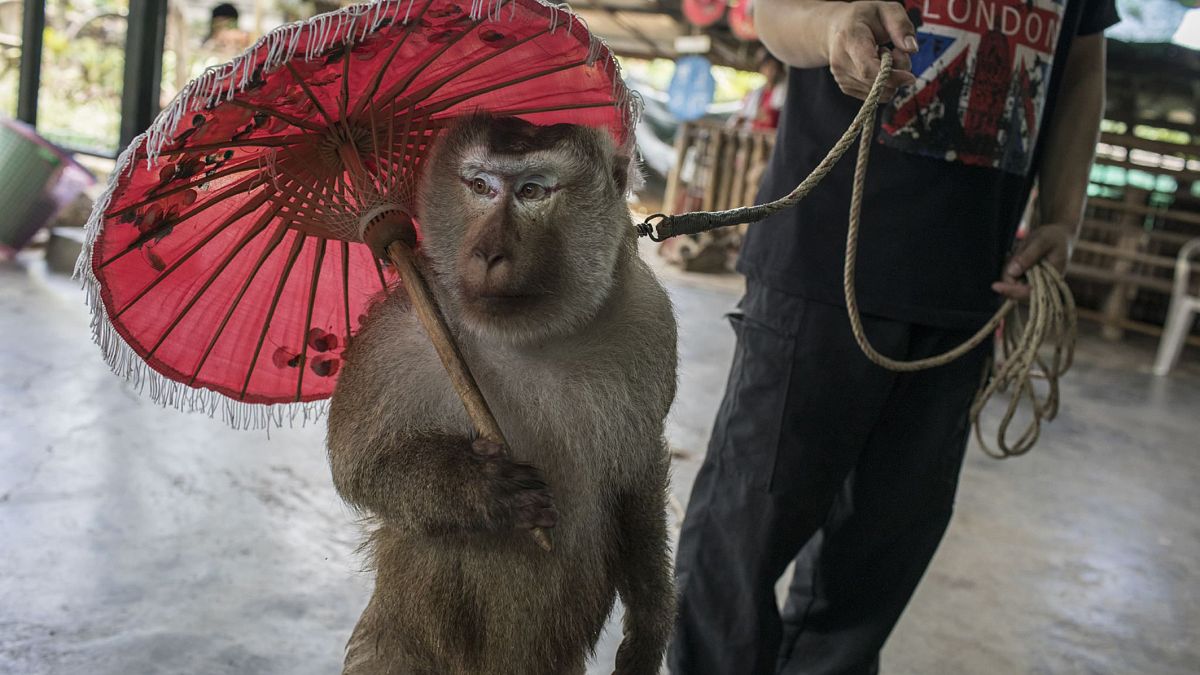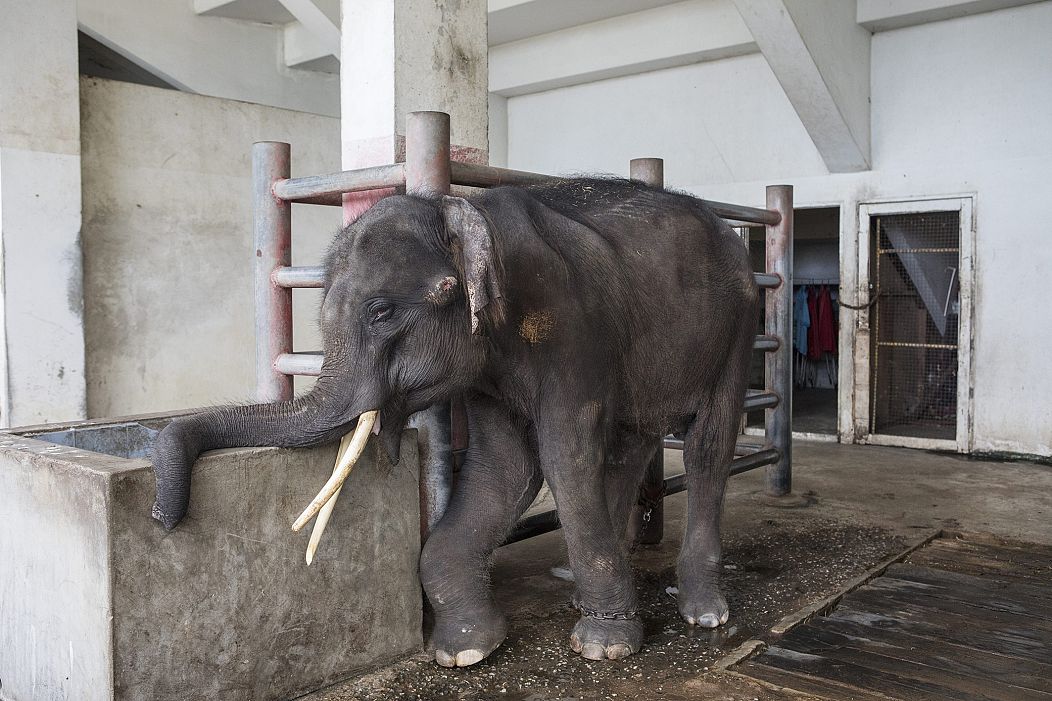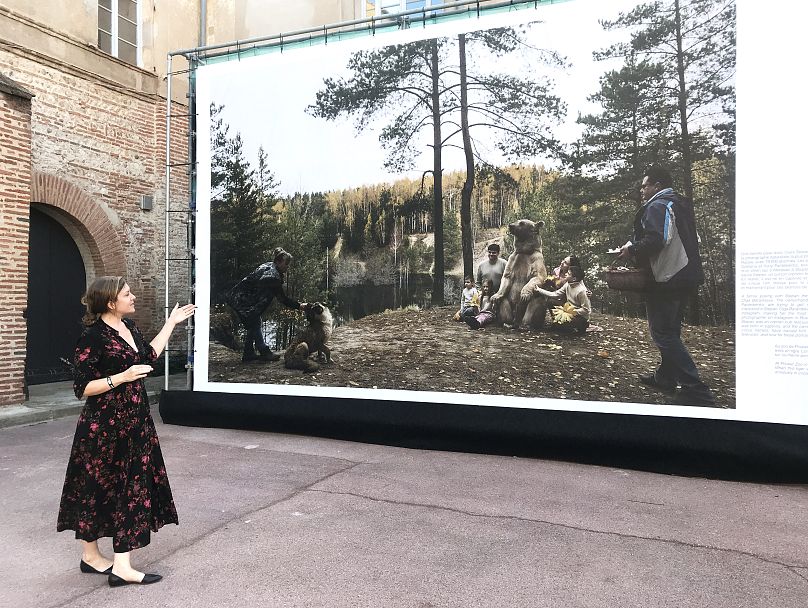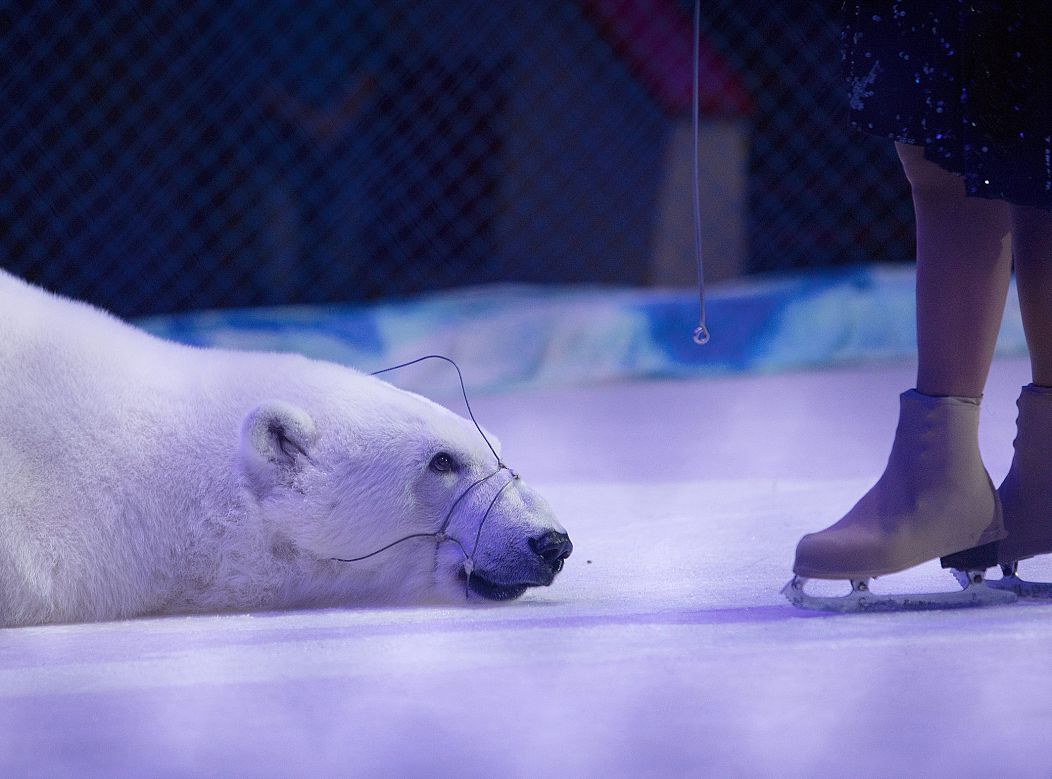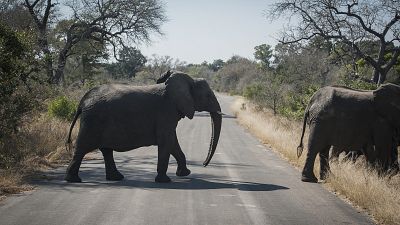Selfies in the jungle: Abuse, exploitation and the dark side of wildlife tourism
Photographer Kirsten Luce spent months documenting animals being exploited for entertainment.
Whether it is bathing with elephants, feeding tigers or watching bears dance, tourists are often offered entertainment involving wildlife that raises concerns about animal welfare.
Photographer Kirsten Luce and writer Natasha Daly spent months documenting the exploitation of animal in the Amazon, Thailand and Russia.
The first results of the investigation, published by National Geographic, inspired the pair to continue to follow the story and this month their work was displayed at the Visa Pour l'Image international journalism festival in Perpignan, France.
Luce told Euronews that she hoped the work helped raise awareness of animal exploitation and tourism.
High demand, little responsibility
"We decided to go to Thailand, which is a very popular spot to see wildlife. There we focused on native species. In Thailand those were Asian elephants, tigers and other types of animals too," Luce said.
One of the exhibited images shows Gluay Hom, a five-year-old elephant who was found beneath a stadium at an entertainment facility near Bangkok.
His leg was broken and there were open sores on his face. Six months after this image was taken the team’s fixer found Gluay Hom at the same spot in the same condition.
In Thailand animal welfare laws either don't exist or aren’t strictly enforced so there is no punishment for keeping a sick elephant in a backyard - even if people find it upsetting.
There is rarely enough attention to the cause for crucial changes to happen, says the photographer, although sometimes the images go viral.
This is how Gluay Hom’s story ended happily. After his photograph was shared online he was rescued by the Elephant Nature Park, which purchased the elephant from his previous owner.
However, Luce said, the owner will likely use the fund to purchase more elephants.
Let elephants be elephants. Are there ethical options for tourists?
After photographing around two dozen elephant attractions, Luce said that a couple were really bad, a couple were good and the rest fell across the range in between.
To find an ethical one, she suggests tourists check reviews and comments for the attractions online and choose ones that are observational: where visitors don’t get to touch the elephants.
These institutions are sanctuaries which take care of the animals until they die, giving them access to food and water while they can freely interact with each other. Simply put, they let animals be animals.
These conditions form a stark contrast with those experienced by the chained elephants that are forced to constantly interact with tourists, and where trainers force them to perform tricks.
Some animal owners, however, were found to be using the same animals in attractions of both types.
They understand that there is a growing number of tourists, largely from the west, who are happy to pay a premium for experiences they deem ethical. Tourists from places like China are predominantly still happy with the cheaper, traditional option, where they also get to interact with the animals.
Social media's role
Exploited animals sometimes become social media stars.
After Thailand, the team decided to go to Russia after looking through Instagram photos.
A bear called Stepan, known to many Russians, regularly stars in both TV shows and movies and is increasingly being hired by photographers after a few leaders in the industry took some remarkable portraits with the animal.
These are being added to the photographic portfolios - with wealthy families, in turn, hiring the photographers to recreate the look.
There are also workshops for photographers, eager to pay to learn how to take this kind of portrait.
One of the photographs shows twelve photographers taking pictures of Stepan with the model. Each would have paid $800 for the workshop in what is a growing business for the bear handlers, who used to work in the circus many years ago. They insist they take care of Stephan’s welfare.
Other bears were photographed by Luce in Russian circuses, including what has been called the only circus in the world with performing polar bears. The whole show was on the ice, where the animals are all muzzled.
Fictional stories for no hard feelings
Sometimes animals are surrounded by legends that audiences find easy and pleasant to believe.
They are created to hide animal abuse or increase the sales of the interactions with performing animals. Animals can die quickly in these conditions and are at times secretly substituted for replacements to keep up the pretence that they are being treated well.
Operators also claim animals have been rescued when they’ve either been born in captivity or worse: captured from the wild. Tourists can occasionally spot tiny cages animals are kept in when they are not performing. Signs may falsely state the animals are transferred for better facilities for the night.












